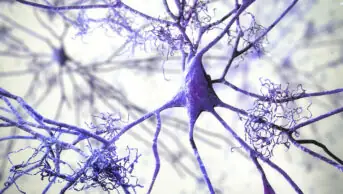
Shutterstock.com
An oral spray containing cannabinoids is effective at reducing spasticity symptoms in motor neurone disease (MND), study results published in The Lancet Neurology (13 December 2018) have shown[1]
.
The randomised, double-blind, phase II trial involved 60 patients who were randomly assigned to placebo or an oromucosal spray containing delta-9-tetrahydrocannabinol and cannabidiol. Patients self-escalated their dose during the first two weeks and then maintained that dose for the remaining four weeks of the trial.
The researchers found that after six weeks, spasticity (measured on the Modified Ashworth Scale) had improved in the active treatment group by a mean of 0.11, but deteriorated in the placebo group by a mean of 0.16, leading to a significant difference in effect between the two groups. There was also a significant reduction in patient-reported pain, but no differences in other disease-related measures, such as sleep quality, spasms or strength.
Oromucosal cannabinoid sprays have been approved in several countries for symptomatic treatment of spasticity in multiple sclerosis, but they have not previously been explored for spasticity in MND.
“Further confirmatory phase III studies are warranted to confirm our findings, and more clinical research into the potential neuroprotective effect of cannabinoids in slowing disease progression in motor neurone disease is warranted,” the authors said.
References
[1] Riva N, Mora G, Sorarù G et al. Safety and efficacy of nabiximols on spasticity symptoms in patients with motor neuron disease (CANALS): a multicentre, double-blind, randomised, placebo-controlled, phase II trial. Lancet Neurol 2019; 28(2): 155–164. doi: 10.1016/S1474-4422(18)30406-X


